Three
Industry
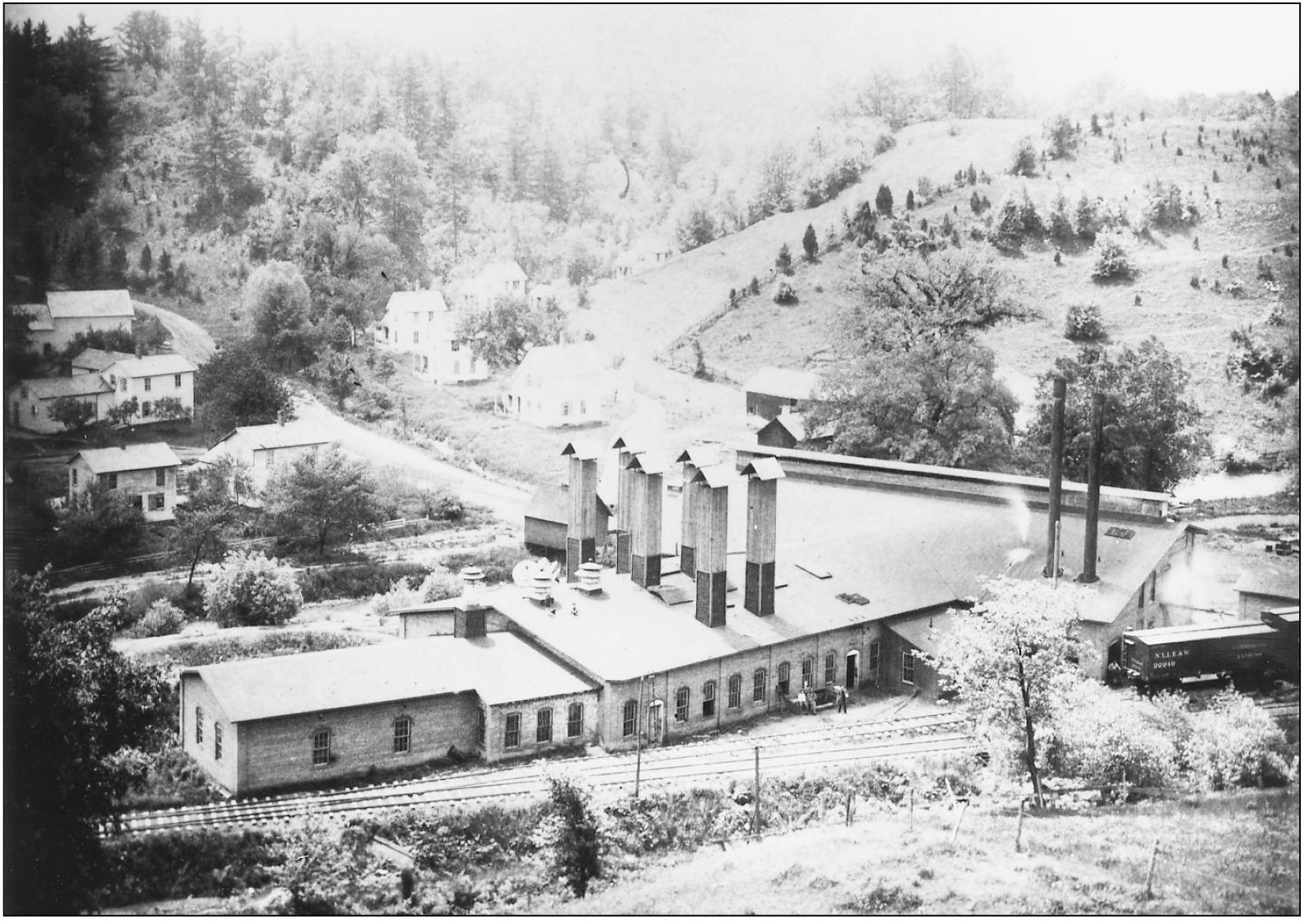
Industry in Penn Yan and Yates County in the years between 1850 to 1960 changed from small mills producing locally consumed goods to larger enterprises shipping goods outside the county. The sawmills and the gristmills were replaced by factories making paper products. Industries evolved to serve the agricultural interests; they made baskets to ship fruit, converted grain to malt or flour, and provided cold storage of fruit.
The twentieth century saw the beginnings of new industry not dependent on waterpower, including the manufacture of shoes, clothing, buses, boats, and store fixtures. Today Birkett Mills is the only gristmill left. Buses by Coach & Equipment and boats by Penn Yan Marine are still made here.
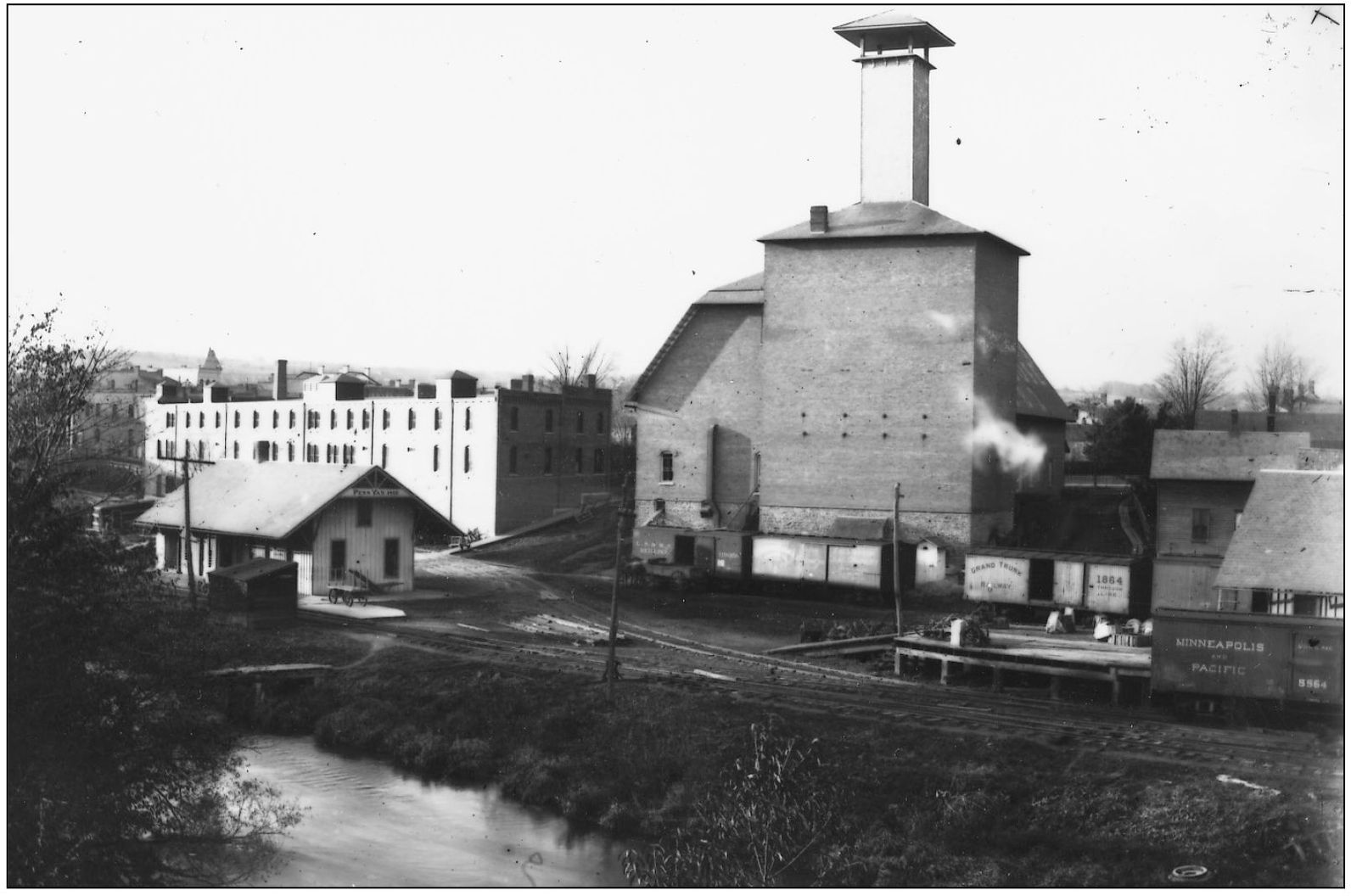
Nearest the Keuka Lake outlet in this c. 1890 photograph is the Fall Brook (later New York Central) Railroad station. Behind it is the Hunter Fruit Grocery and Cold Storage Co.; on the right is the Yates County Malt Company. The malt house still stands on Seneca Street and the foundations of the other two buildings are visible.
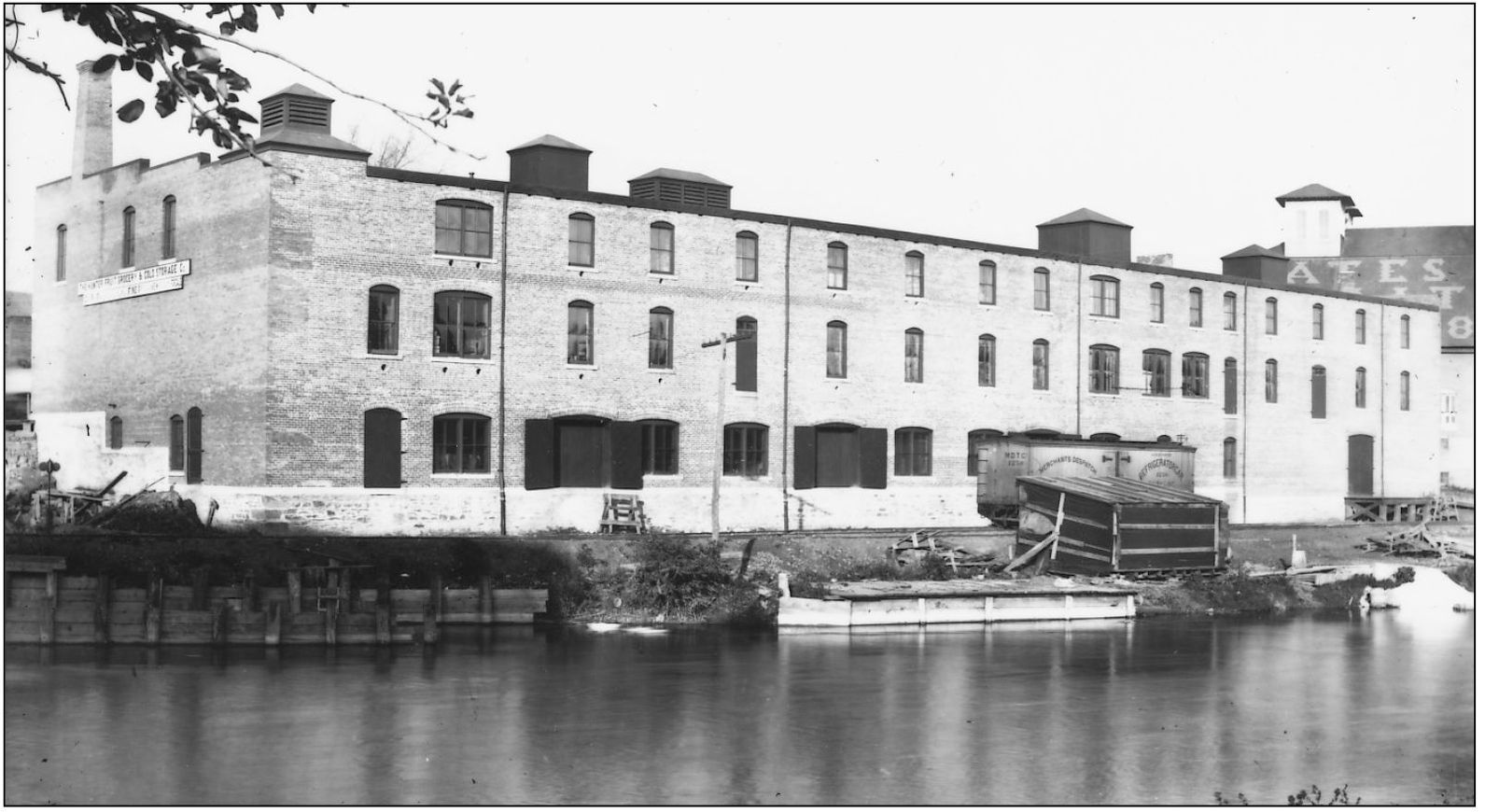
This c. 1890 photograph of the Hunter Cold Storage building illustrates how the buildings that lined the outlet were built alongside the railroad tracks. The ice, which was cut from the lake, was brought in by train and most of the fruit was then shipped out by train. The fruit was delivered by local farmers or on barges brought from various places around the lake by steamboats to the docks. Some of the older warehouses in this area had been built along the canal, which was here prior to the railroad.
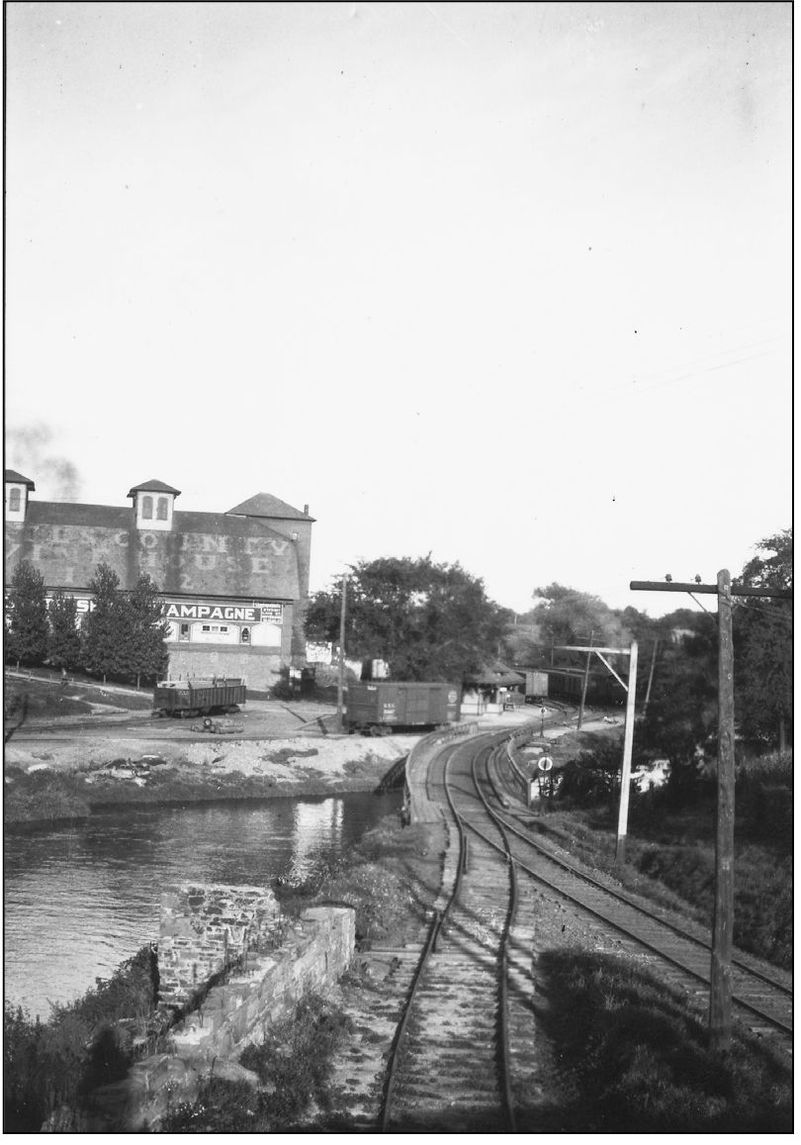
The section of the Fall Brook Railroad that ran from Dresden to Penn Yan opened in 1884, and was built on the towpath of the Crooked Lake Canal. This photograph, made from the original cellulose nitrate negatives (as were the others on these two pages), pictures a trestle that is still in place as a footbridge on the Outlet Trail. The canal stayed on the north side of the outlet, to the left in this photograph. The foundation on the left is the White Mill, which burned in 1913.
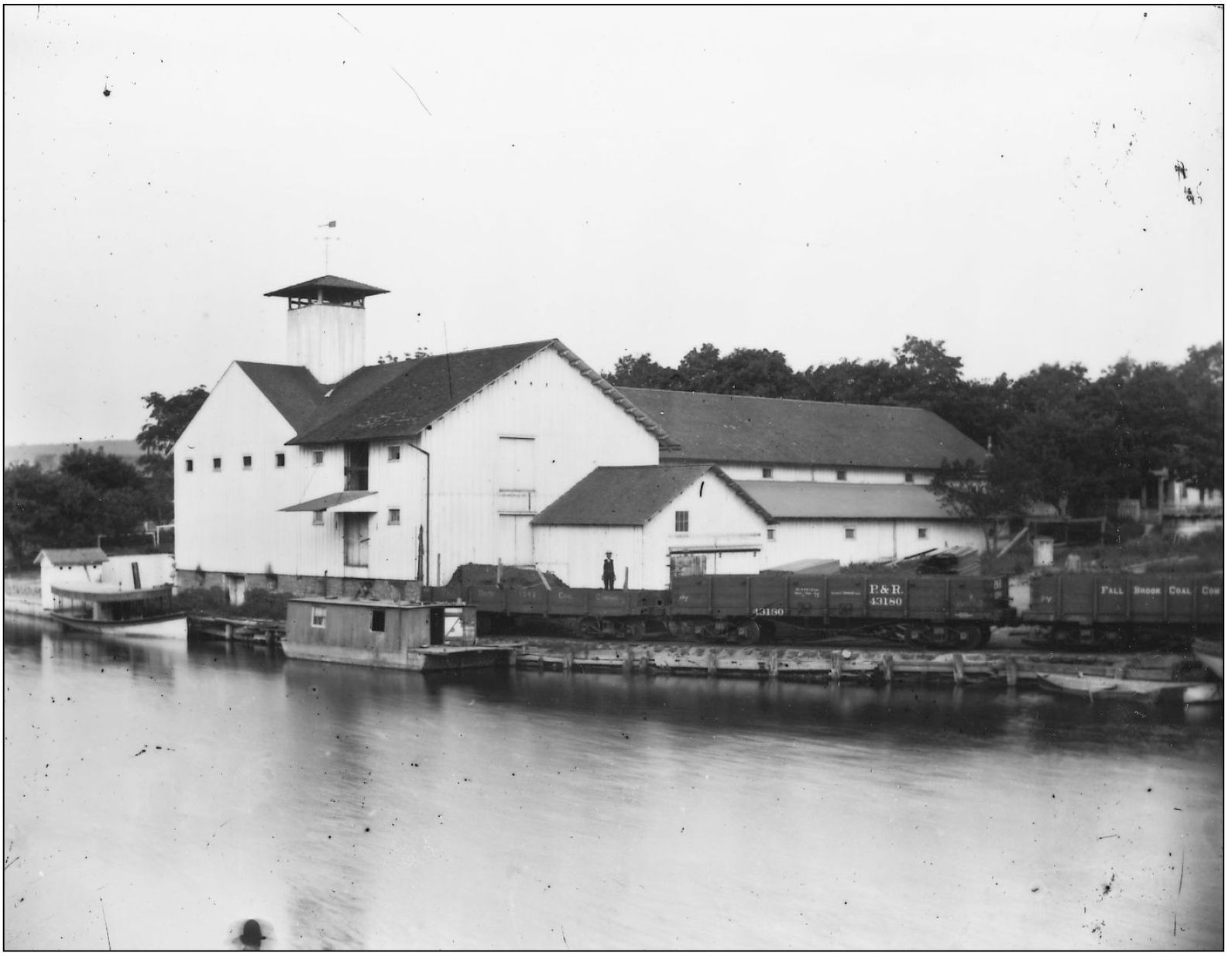
The Henry Tuthill Malthouse, shown here in a c. 1890 photograph, burned in 1894. It was the county’s first malt house, built in 1856. Its location near the canal, the outlet, and later the railroad gave it access to transport for its bulky products. In addition to the barge tied to the wall, there is a private steamboat—Mr. Tuthill’s?
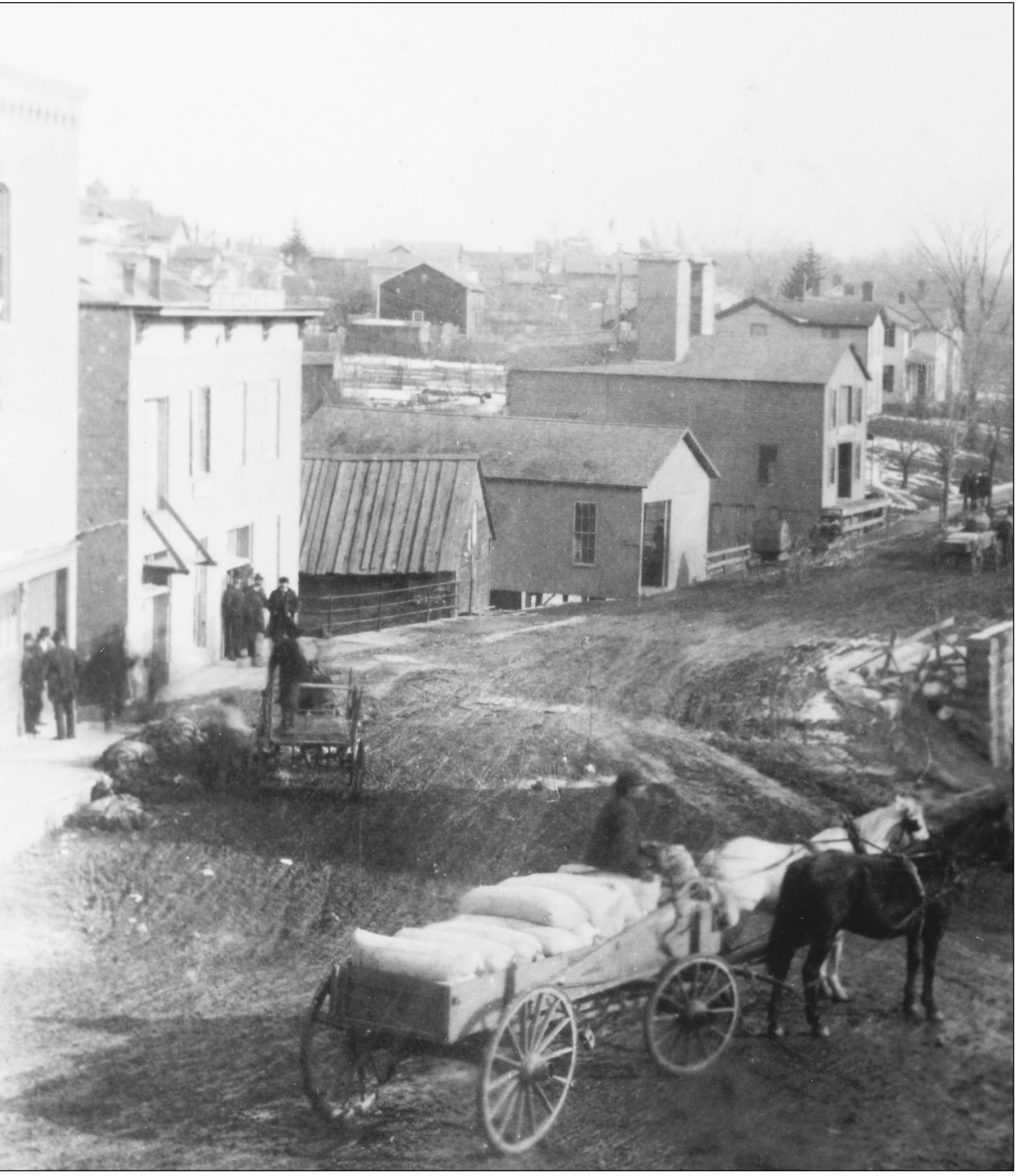
The Yates County Malthouse, built in 1882, and the railroad, built in 1884, were fairly new when this photograph was taken in the late 1880s. The canal tunnel, seen in the center foreground, took the canal under Canal (Seneca) Street to the back of the stores on the east side of Main Street. Farm wagons are lined up waiting to unload their barley, which was later converted to malt, used primarily for brewing. This large (18-by-24-inch) silver albumen print was taken in front of the Owl’s Nest.
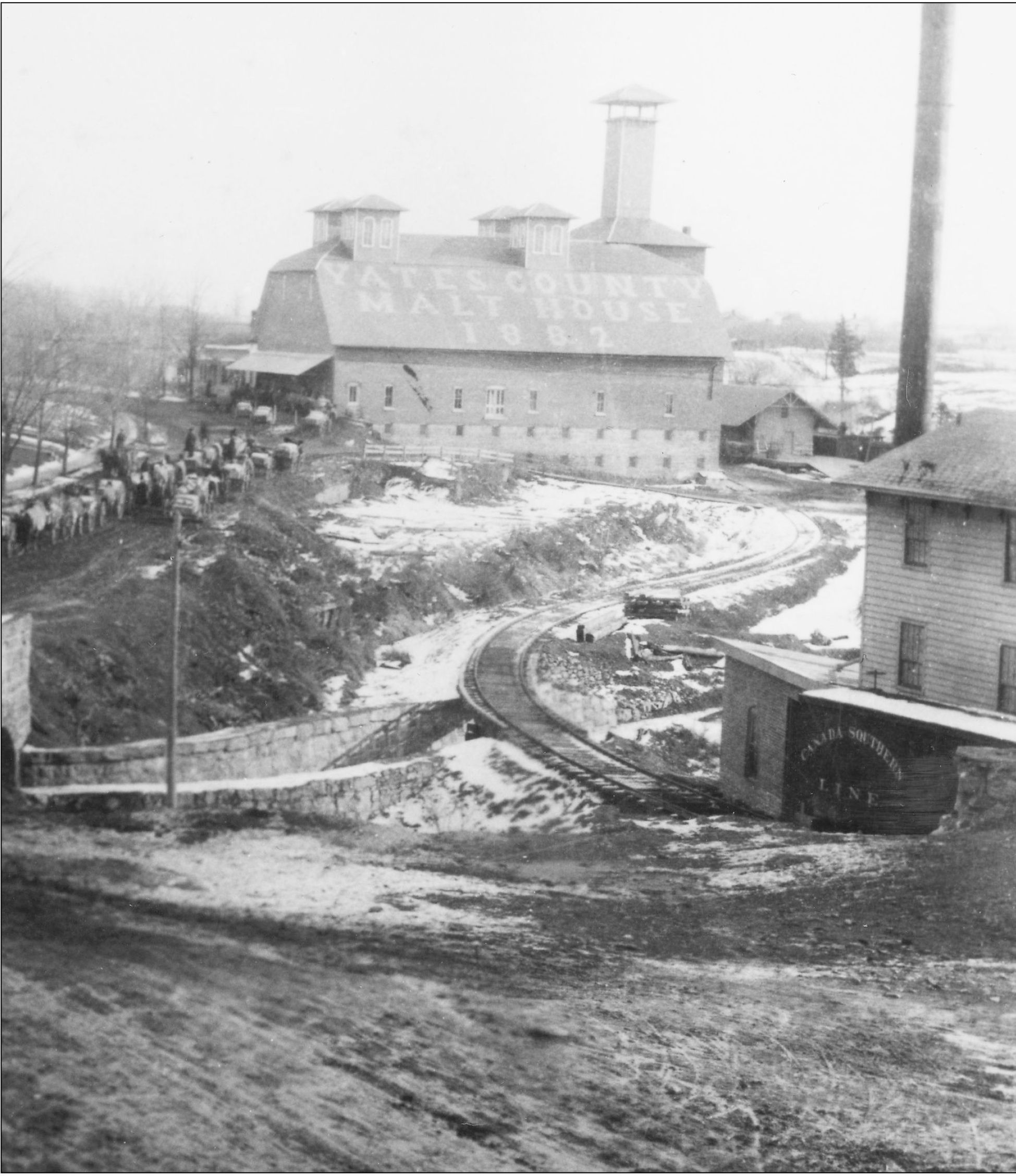
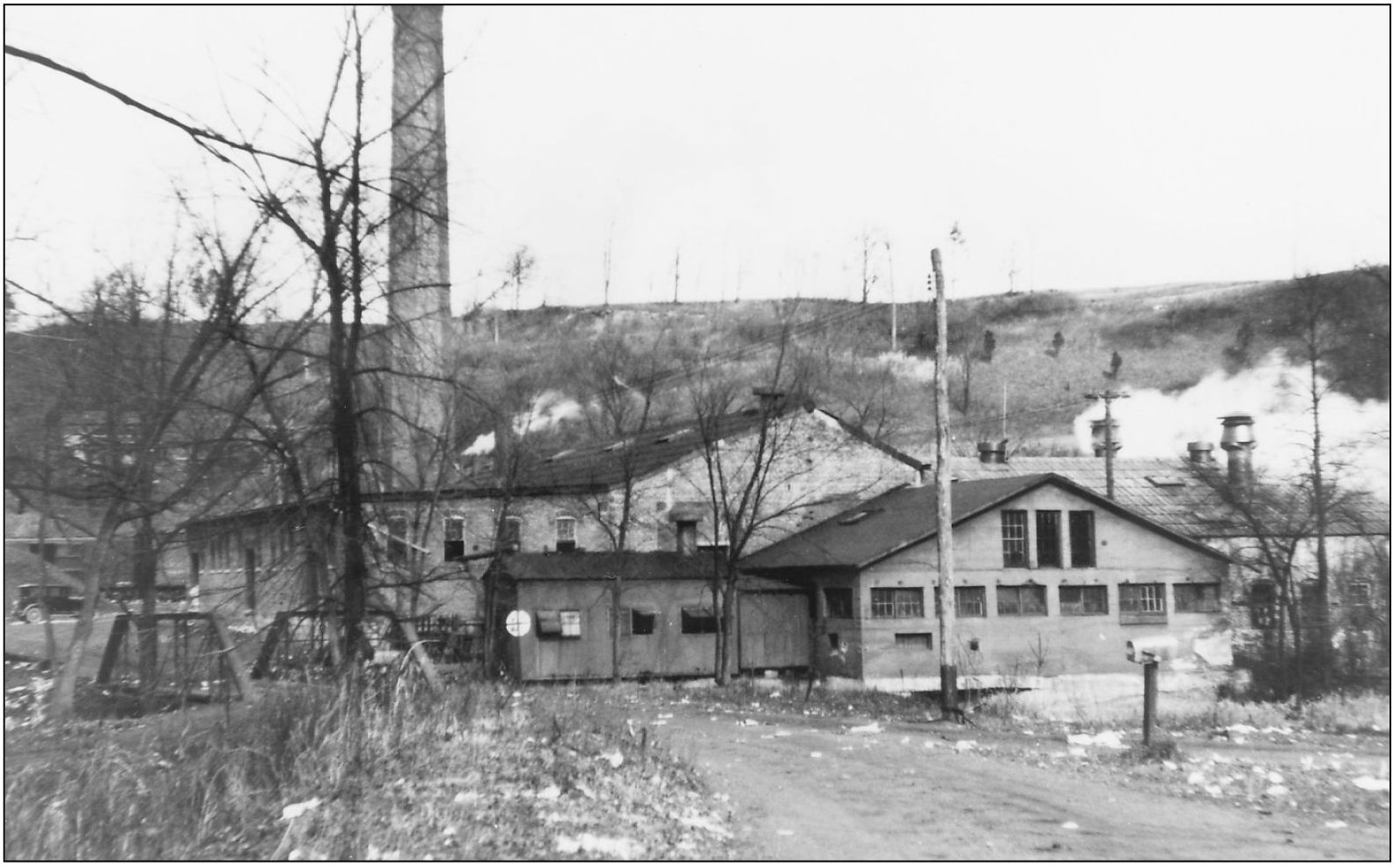
The Andrews Paper Mill started business in 1890 in a building that burned in 1910 (see p. 37). That structure was replaced by the building in this late 1920s photograph. Fires were very common in these plants, which manufactured paper from straw. The brick chimney from this mill still stands along the Outlet Trail.
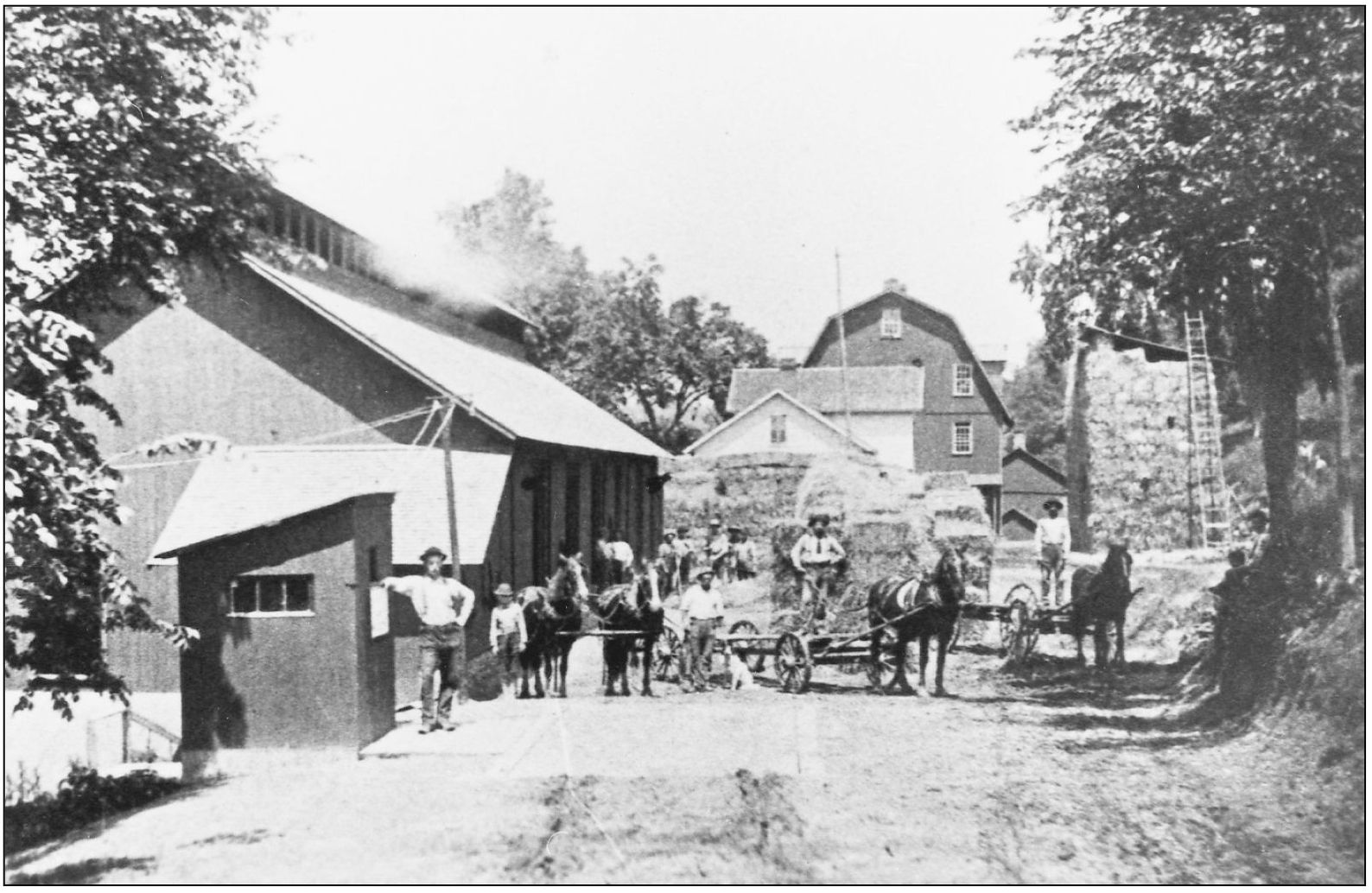
Straw was one of the raw materials for the mills along the outlet that manufactured paper. The horse-drawn wagons from surrounding farms had difficulty bringing in enough straw for the mills, so straw had to be purchased elsewhere and brought in by rail. The man in the foreground in this photograph at Seneca Mill is standing on the scales used to weigh in the loads of straw.
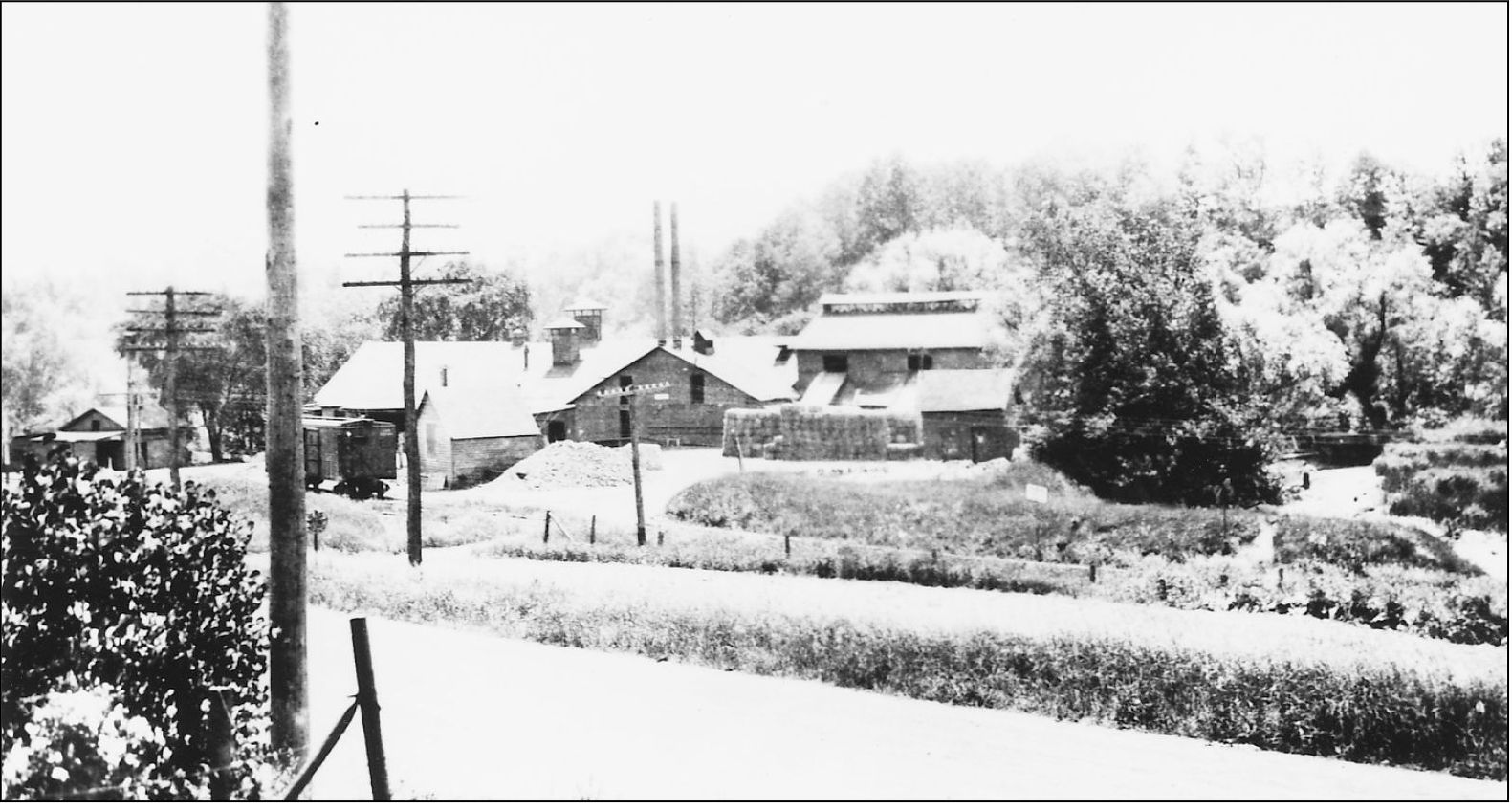
The Fox Paper Mill manufactured paper, rye wrapping, and corrugating from rye straw. In the center foreground is the pile of baled straw that was fed by conveyor into the plant, which had an output of between 15 and 17 tons a day. This mill was unique with its record of over fifty years of continuous operation night and day (Sundays excepted), never shutting down except for repairs. After operating at full capacity during the World War II effort, the mill was completely destroyed by a spectacular 1946 fire. It was not rebuilt.
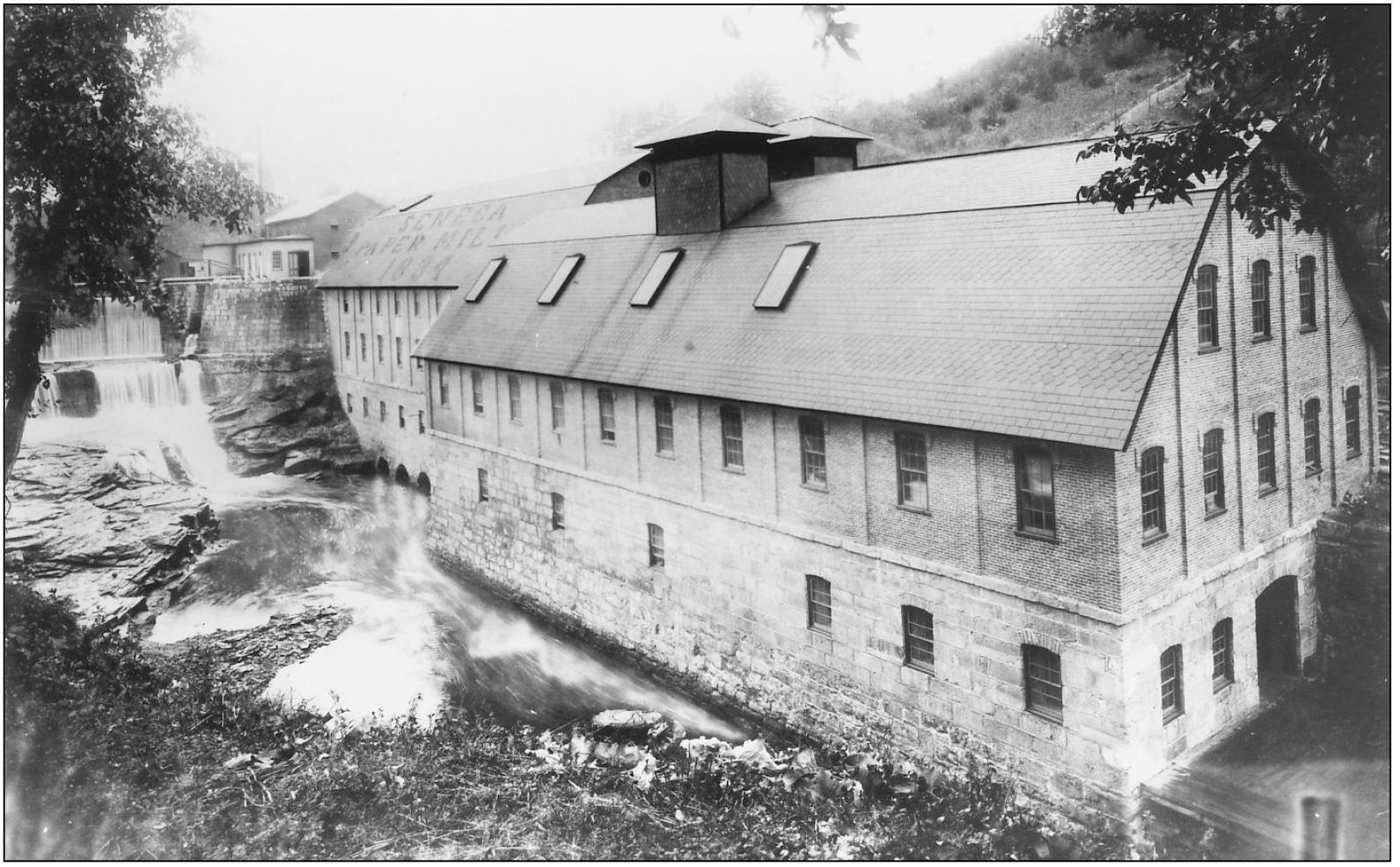
The Seneca Paper Mill, built in 1884, was certainly the most impressive mill on the outlet. The foundation was made from stone blocks taken from the many locks of the abandoned Crooked Lake Canal. Originally this mill’s products were newsprint and book paper, but later the facility produced other grades of paper. In 1889 the mill started generating electricity for Yates Electric Light & Power, Penn Yan’s first electric system. Today this site with its waterfall is a favorite of hikers along the Outlet Trail.
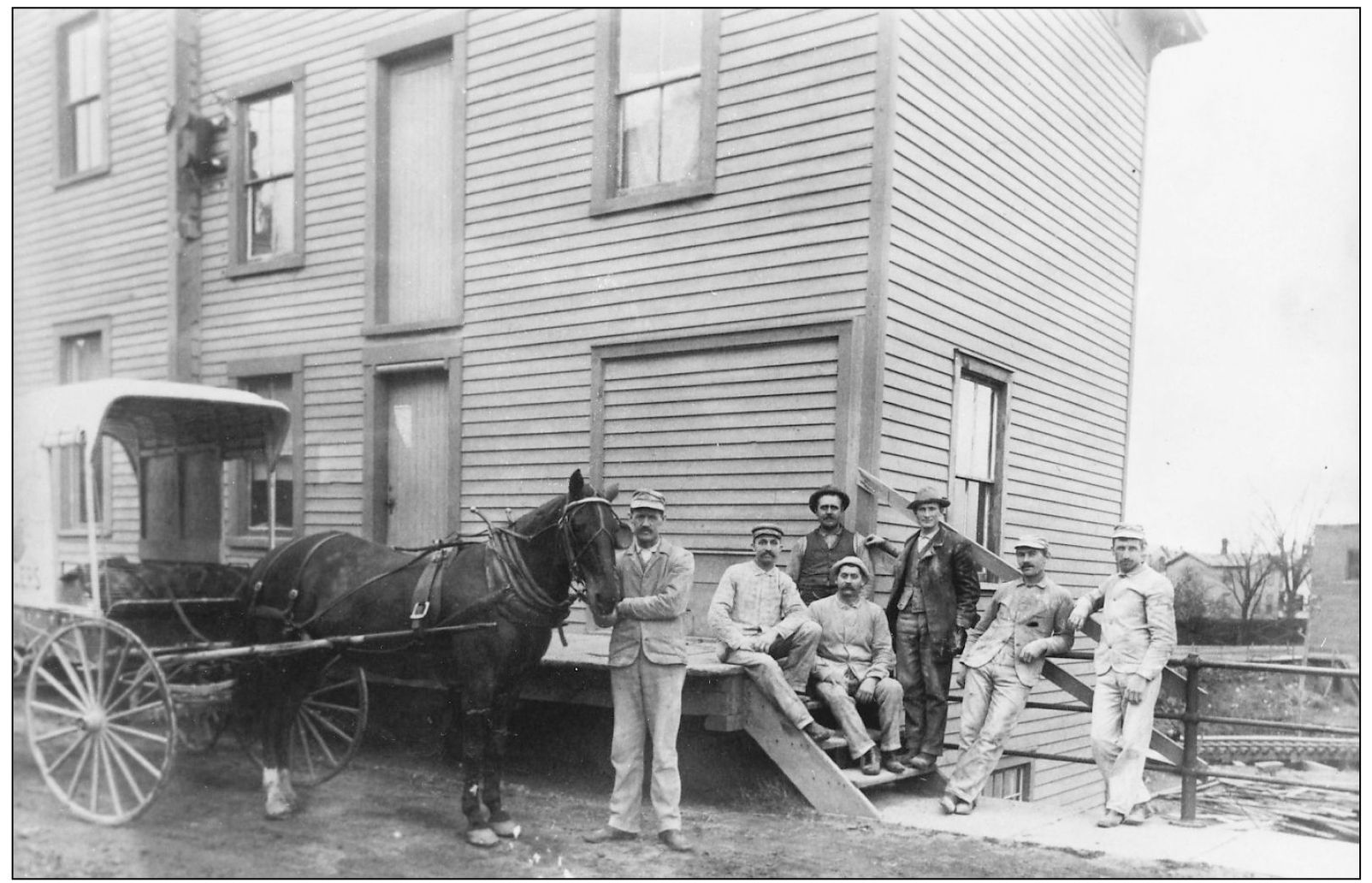
Russell & Birkett’s Mill is shown here in a photograph taken prior to the construction of the current Main Street bridge in 1884. This building was moved to the east 17 feet to its present foundation in order to allow the widening of Main Street. The bridge was constructed of stones taken from the locks of the Crooked Lake Canal. The mill, which also manufactured buckwheat products, had a daily capacity of 350 barrels of flour and 60 tons of feed.
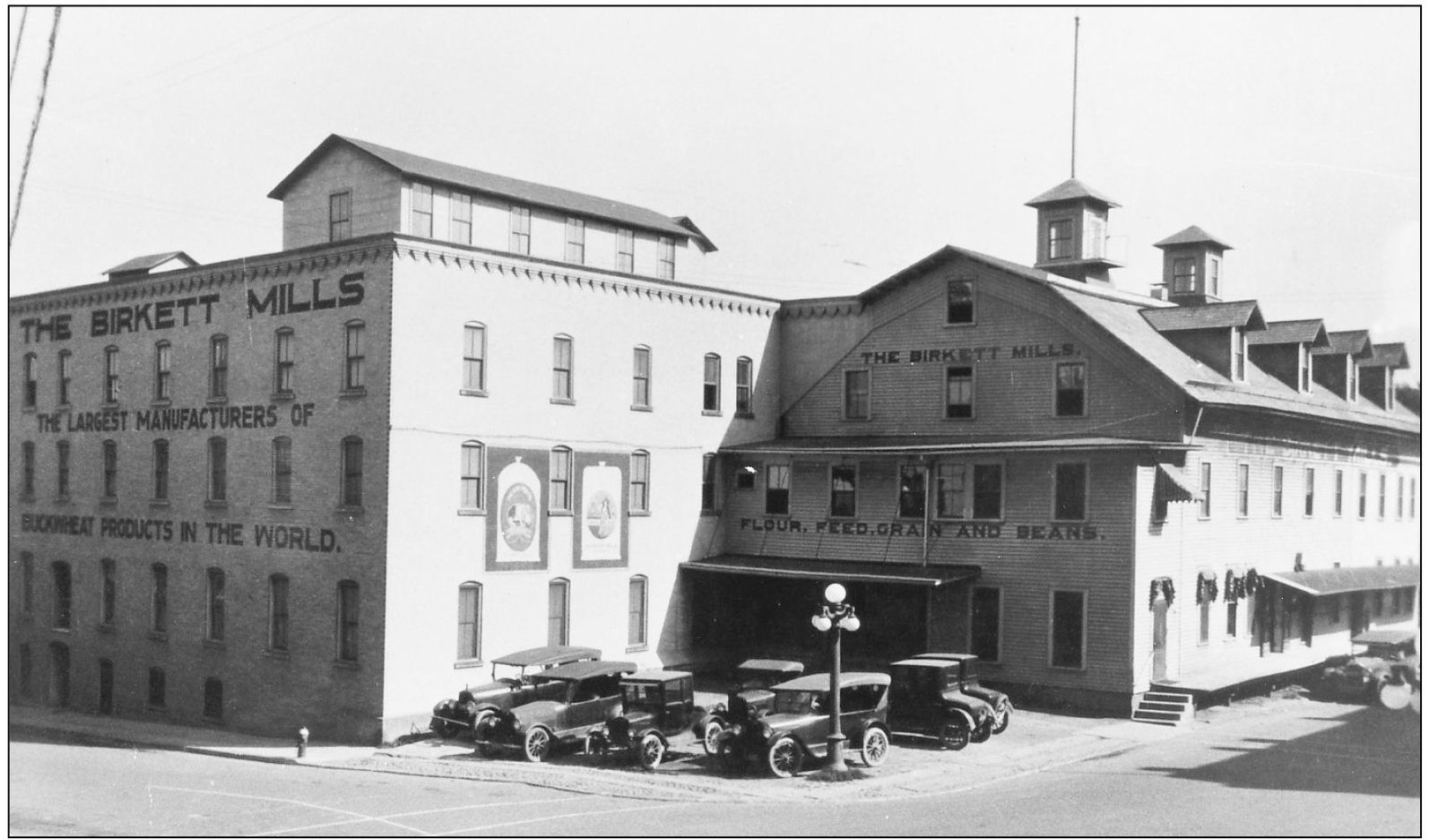
The Birkett Mills, shown here in a late 1920s photograph, are much the same today except for the absence of the loading platform and wooden canopy along Main Street; these were removed in the 1950s. The equipment inside is also unchanged, because most of it is no longer manufactured. Parts of the mill complex date back to the very early 1800s.
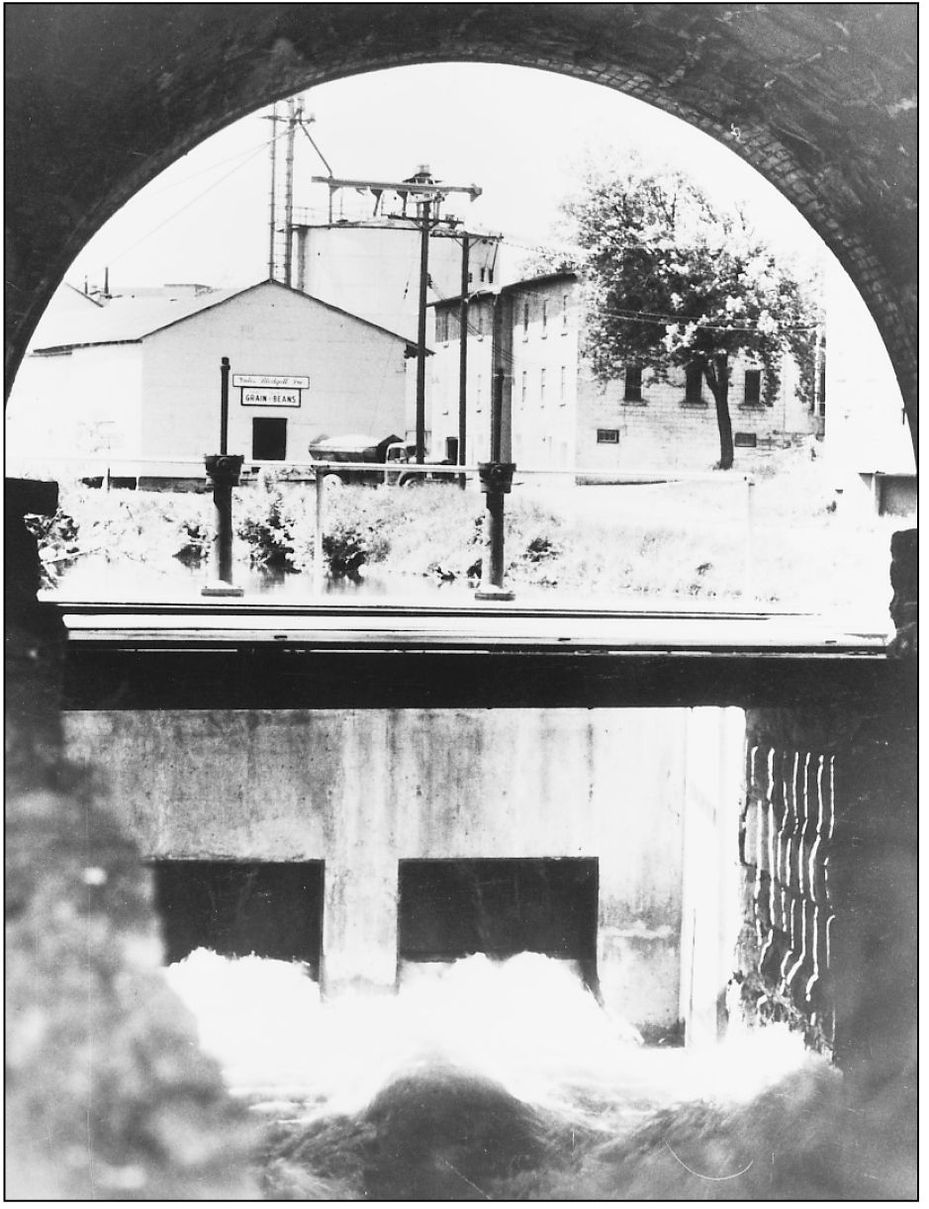
Looking west through the arches of the Main Street bridge in this 1950s Potts photograph, one can see the water control gates, which appear to be wide open. In the background are the warehouses of Yates Blodgett. The round silo in the center of the scene was taken down in the 1990s.
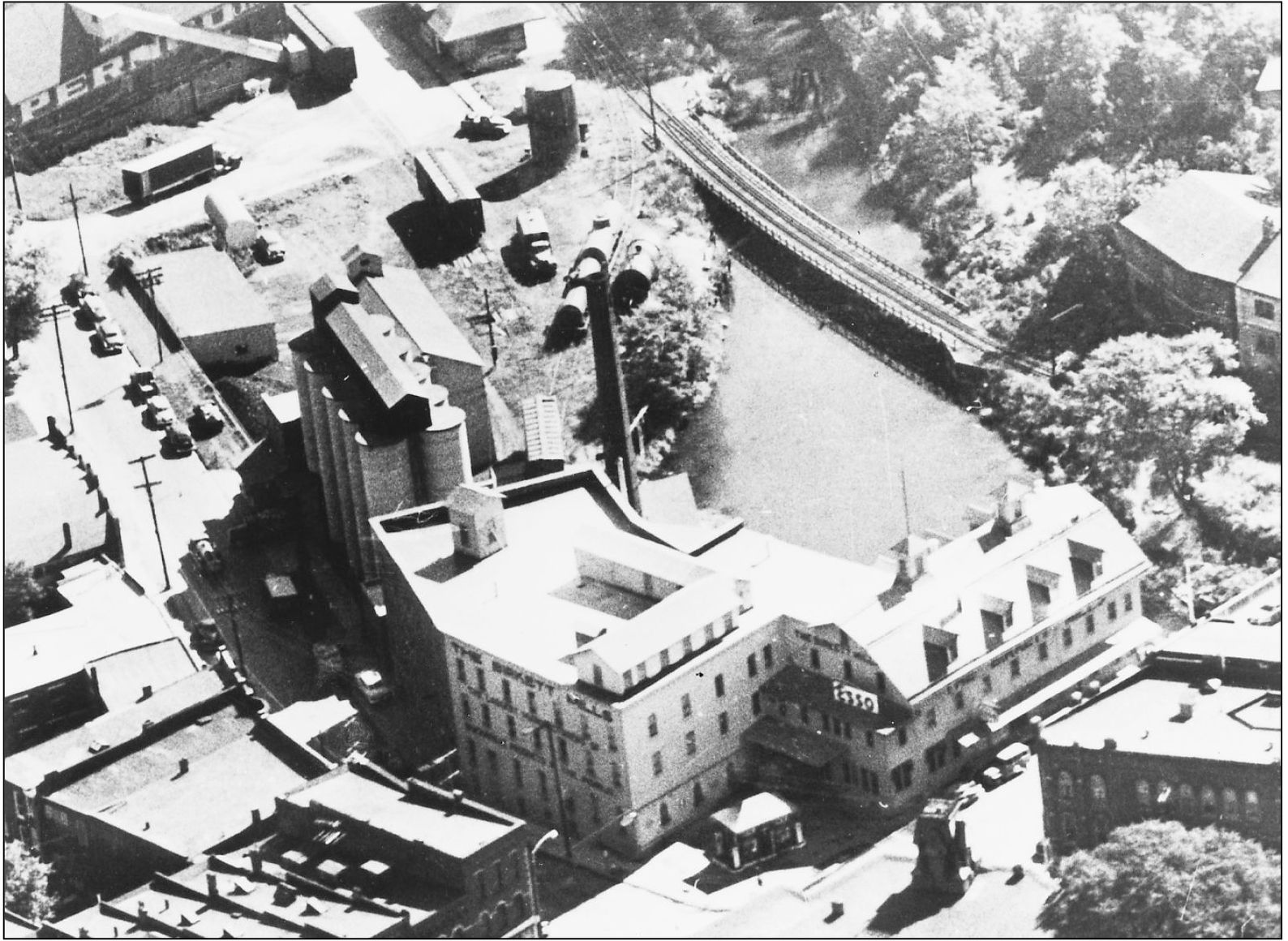
Much in this early 1950s photograph has since changed. While the mill has not changed structurally, the gasoline pumps are gone and silos have been added on Seneca Street. The building between the Owl’s Nest and what is now Tillman Press is gone. The malt house building no longer reads “Pernod,” and is now a warehouse. The railroad station and tracks are gone, victims of the 1972 flood. The trestle is still there as part of the Outlet Trail.
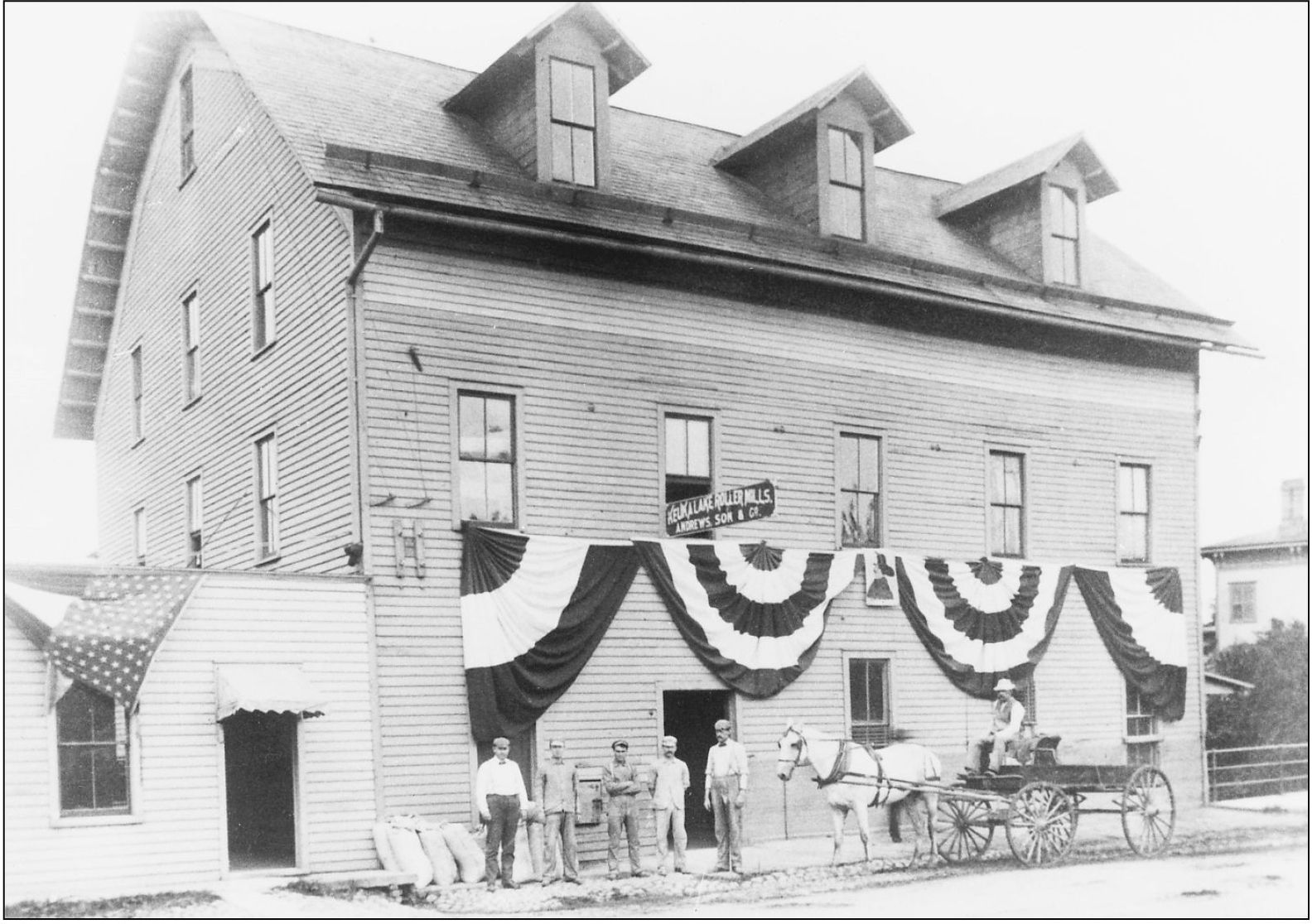
This c. 1900 photograph shows the “White Mill,” as it was commonly known, located on the south side of the outlet. This 1796 gristmill and the mill on the north side of the outlet were under common ownership and operated together. The gates that controlled the flow of water, very important to the mill owners downstream, were an integral part of these two mills. The “White Mill” burned in 1913.
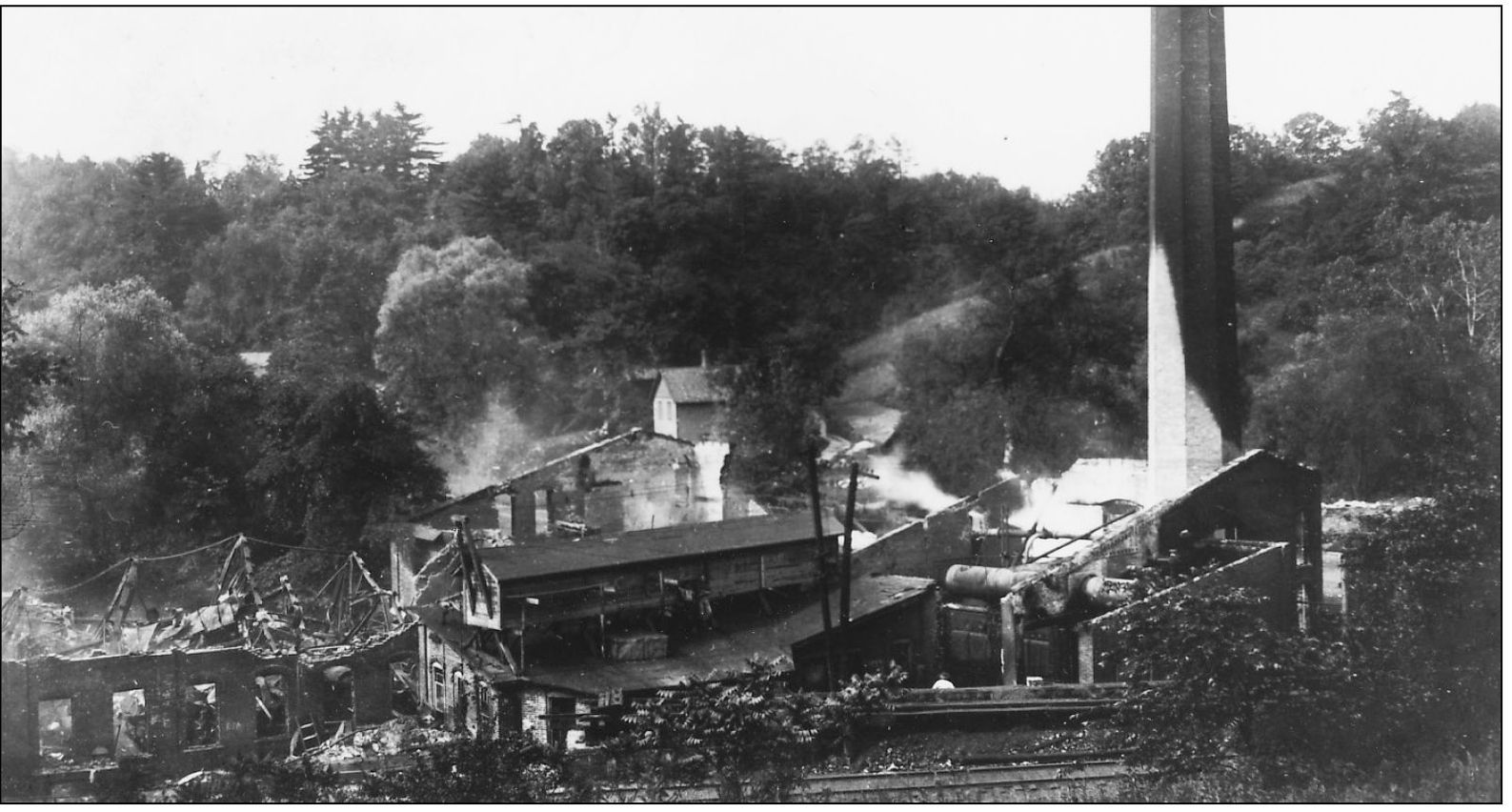
The Milo Mill burned in 1910. This brick chimney, which replaced two metal ones (see the photograph on p. 37), survived the fire and the razing of the plant in the late 1980s. Brick rubble, the mill race, and some abandoned machinery are all that remains of the early-nineteenth-century mills.
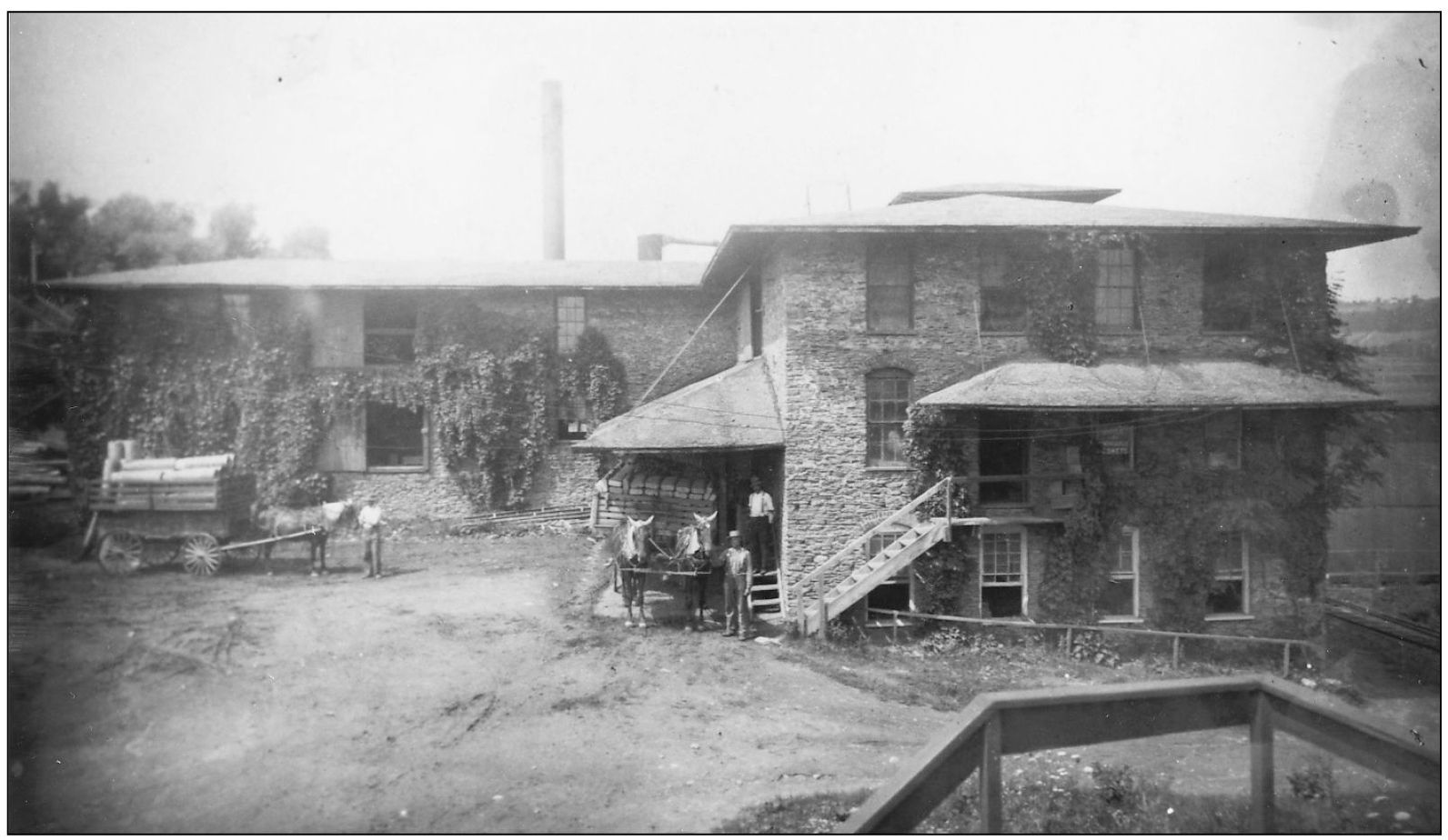
The Guile & Windnagle Basket Factory on Monell Street was built in 1898 to manufacture baskets for shipping grapes. In the 1890s there were eight basket factories in the area producing three million baskets per year. This particular factory produced bushel baskets and grape baskets, but its principal product was the pony basket, which held 5 pounds of grapes. This attractive, vine-covered, stone building was visible from the outlet by passing steamboats. The business was discontinued in 1945 and the building burned in 1947.
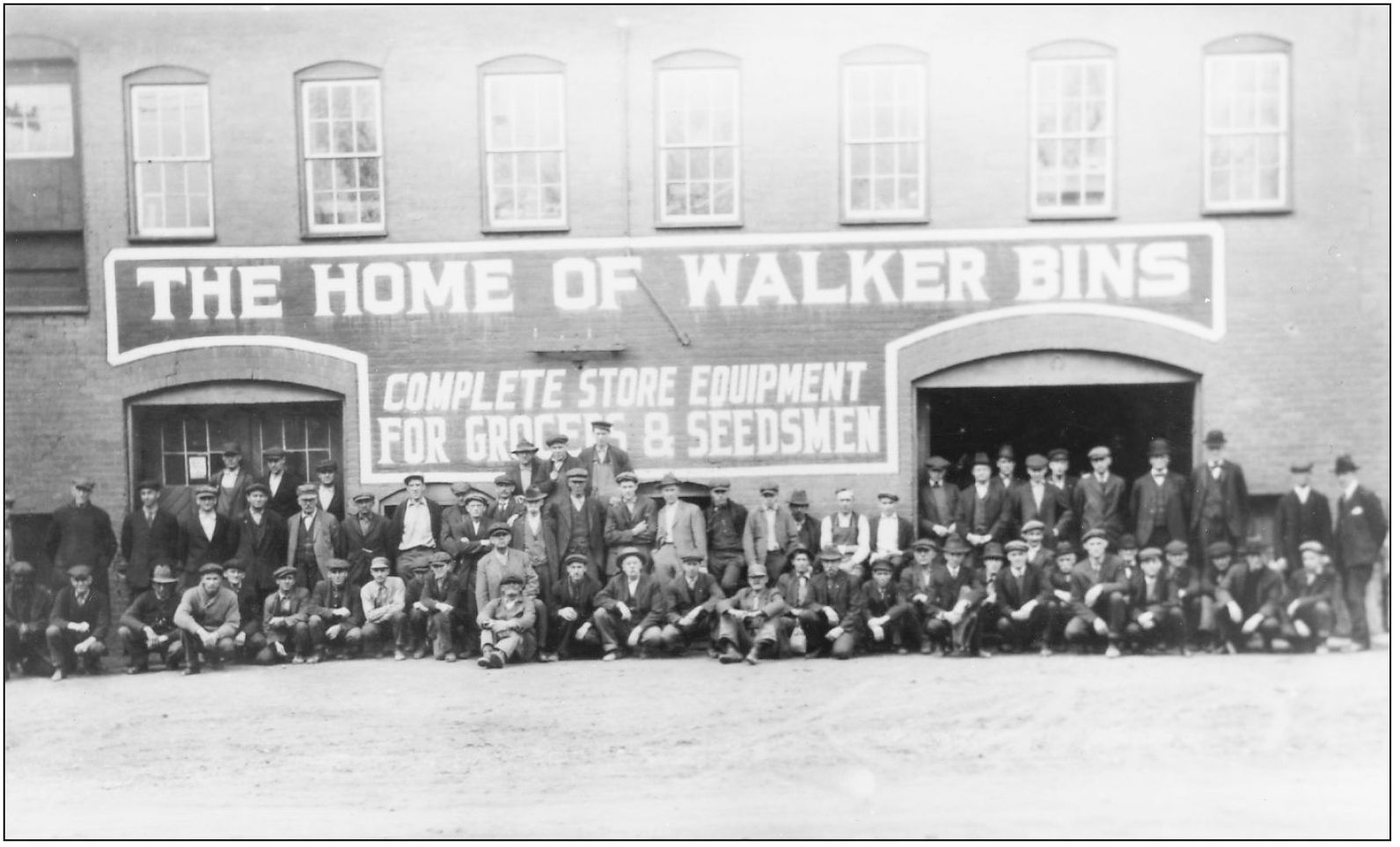
Walker Bin Company employees lined up along the plant for this 1917 photograph. The business was started as a lumberyard at Main and Lake Streets along the outlet. In 1906, the Walker Bin Company acquired the property and expanded the factory. The company manufactured wooden store fixtures that could be found in grocery stores throughout the country.
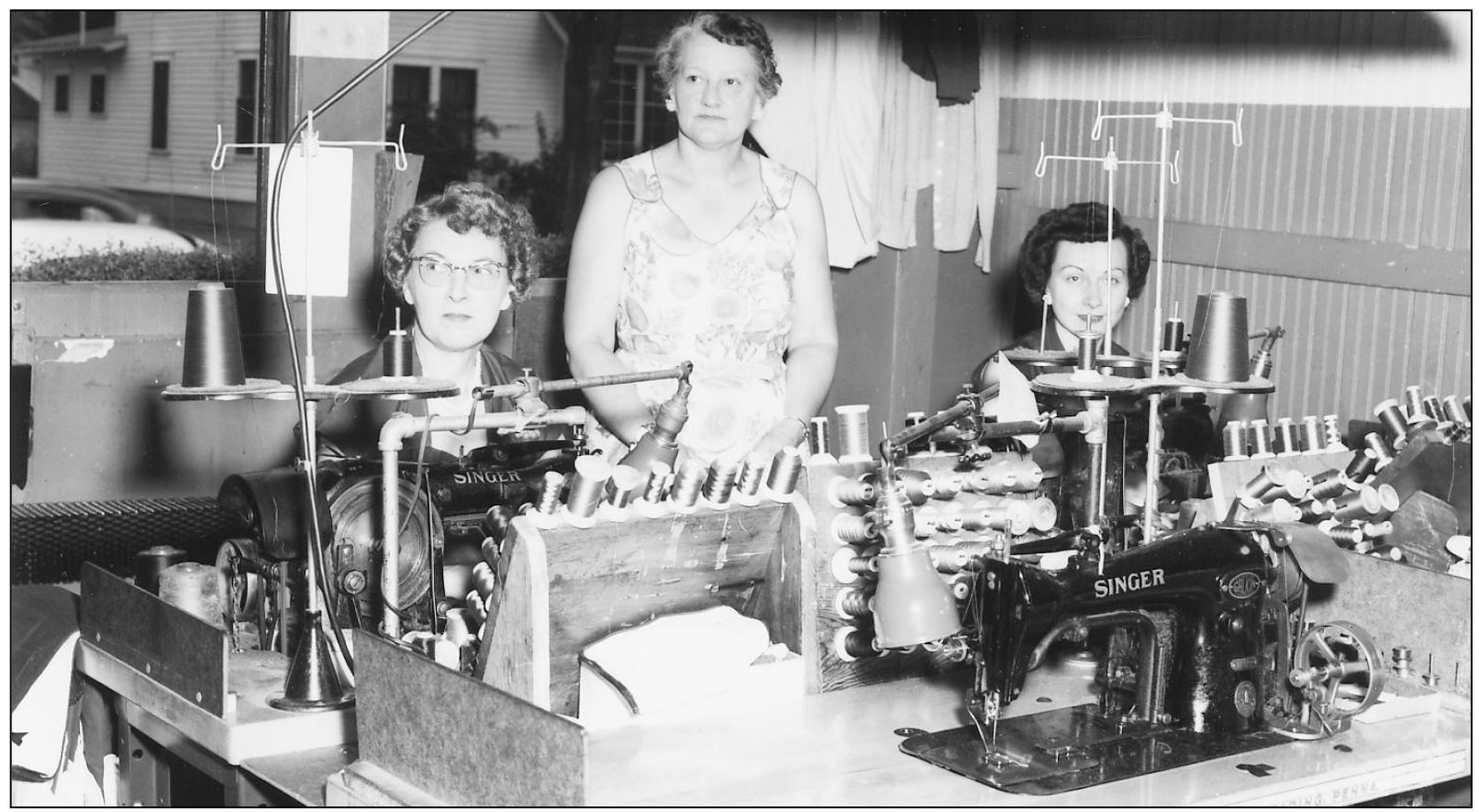
The Penn Yan plant of Michaels Stern opened in 1922 in order to manufacture men’s clothing. During the 1930s they were the largest industrial employer in Yates County. The best years for the plant were probably when they manufactured army uniforms during World War II. They again received a large government contract for uniforms in the 1960s. The plant on Liberty Street closed in 1977. The ladies in this 1956 Potts photograph being recognized for their service are Edna Bassage (thirty years), Effie Strum (thirty-five years), and Edith Gould (sixteen years).
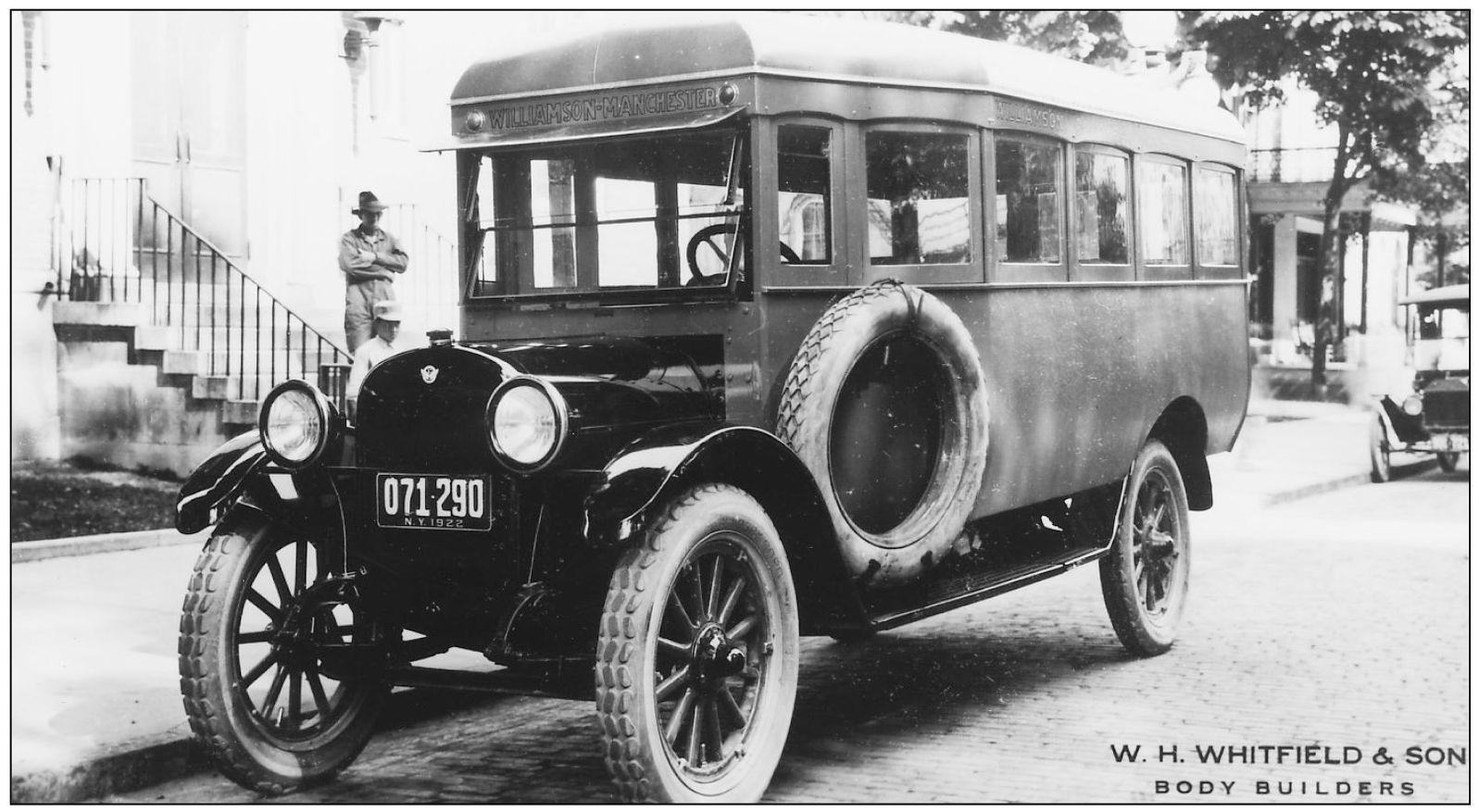
W.H. Whitfield was one of the first businesses to rebuild after the fire in 1872 that destroyed much of Jacob Street. The company originally built carriages, but converted its facility to fabricate bus bodies in 1914, incorporating as Whitfield & Sons, Inc. in 1924. The 1922 photograph above shows a bus typical of the era. In 1947 Carl Kreutziger reorganized the company as the Coach & Equipment Corporation with two plants, one on Champlin Avenue and one on Water Street. The company, now known as the Coach & Equipment Manufacturing Company, Inc., is a specialty bus manufacturer with a plant located south of Penn Yan.
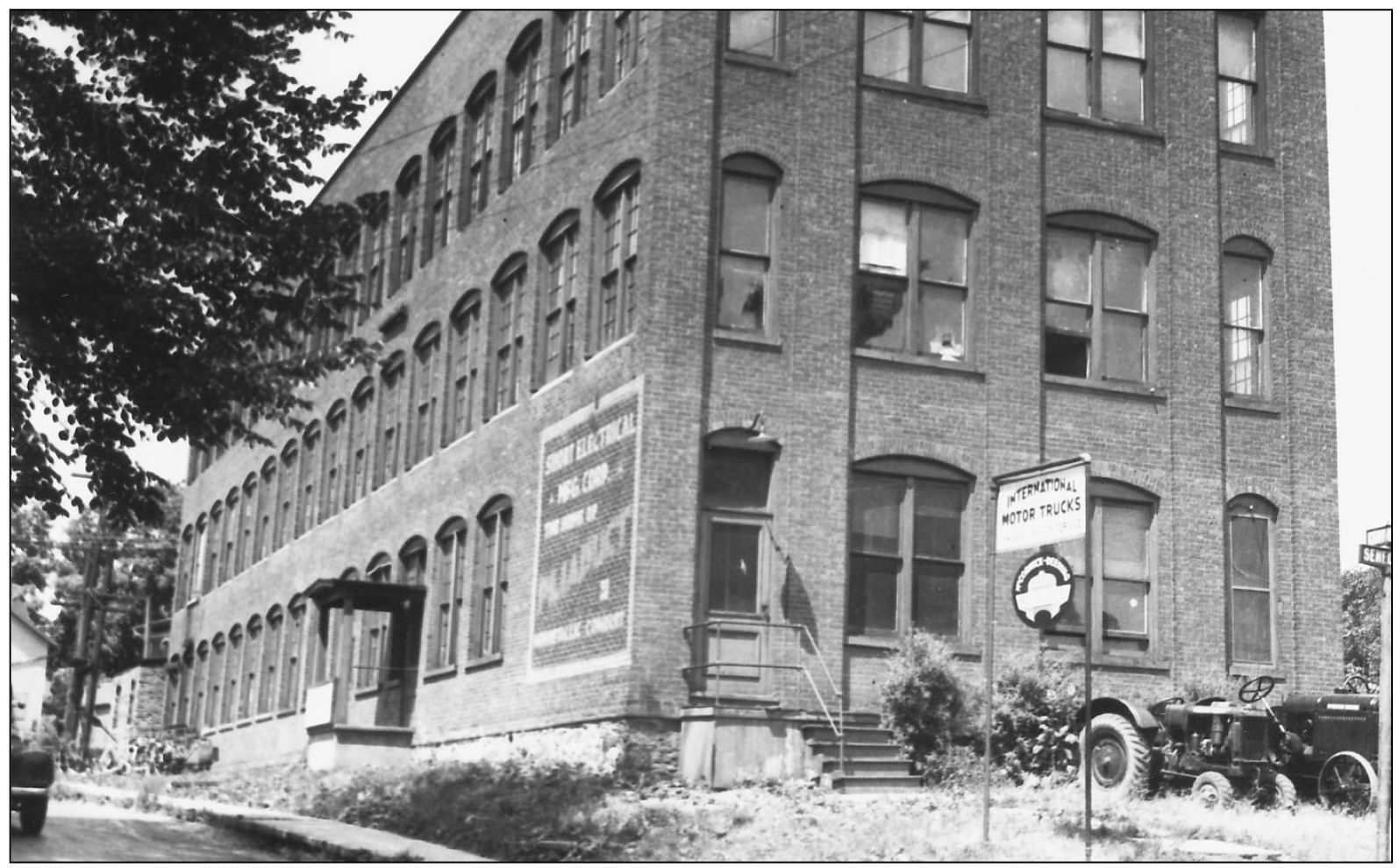
International Motor Trucks Sales and Service occupied this building on Seneca Street. In the 1930s the yard to the east of the building was filled with International tractors, trucks, and farm implements. This was originally the Wagener Brothers shoe factory (see below).
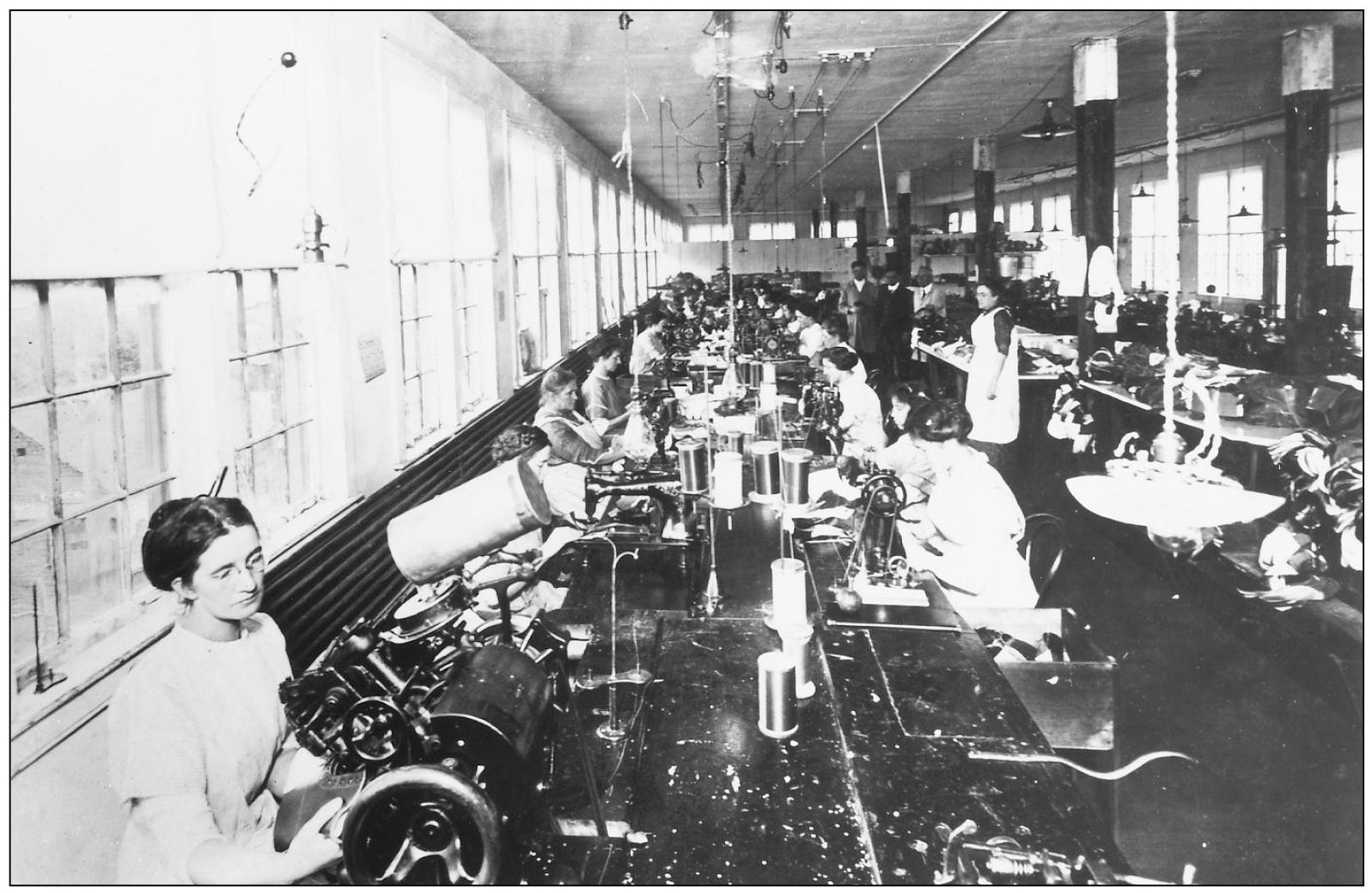
The Wagener Brothers Shoe Company was organized in 1900 to manufacture shoes in a small shop in the rear of the Sheppard Opera House. Selling the shoes in their own store on Main Street, the company soon outgrew the shop and erected this building on Seneca Street. In 1911 the company was reorganized as the Rochester Shoe Company, employing about one hundred persons.
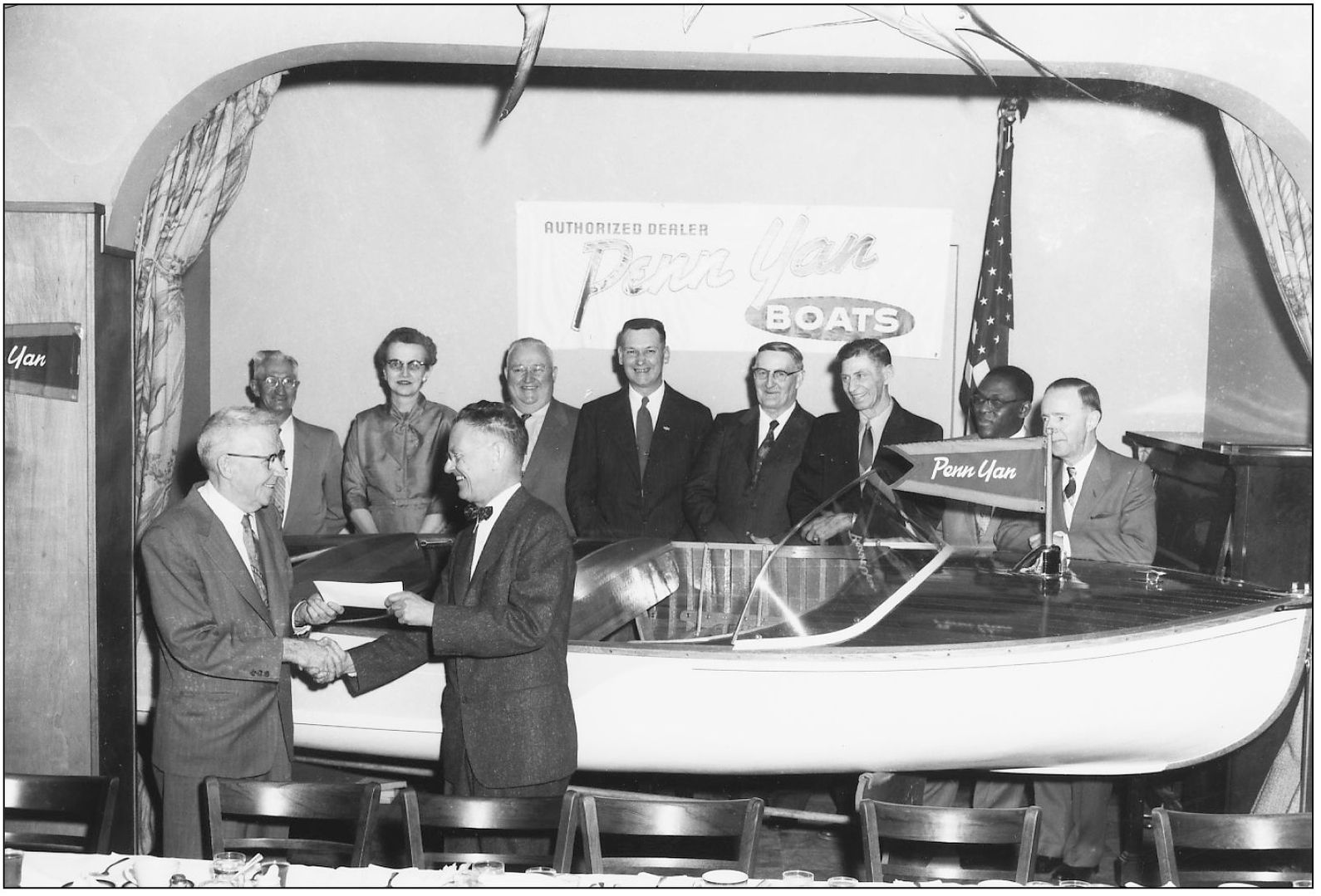
The Penn Yan Boat Company built a new plant on Waddell Avenue in Penn Yan in 1929. Since then they have been spreading the name “Penn Yan” throughout the country on their boats. In the 1956 photograph above, taken at the Knapp House by Bill Potts, President Ralph Brown congratulates Alfred (Dutch) Tillman, who raced boats for the company. Behind the 12-foot Swift are, from left to right, Art Beckhorn, Ruth Lewis, John Cornish, Clark Parmalee, unknown, Bob Stuart, Robert Gill, and Ray Buckley.
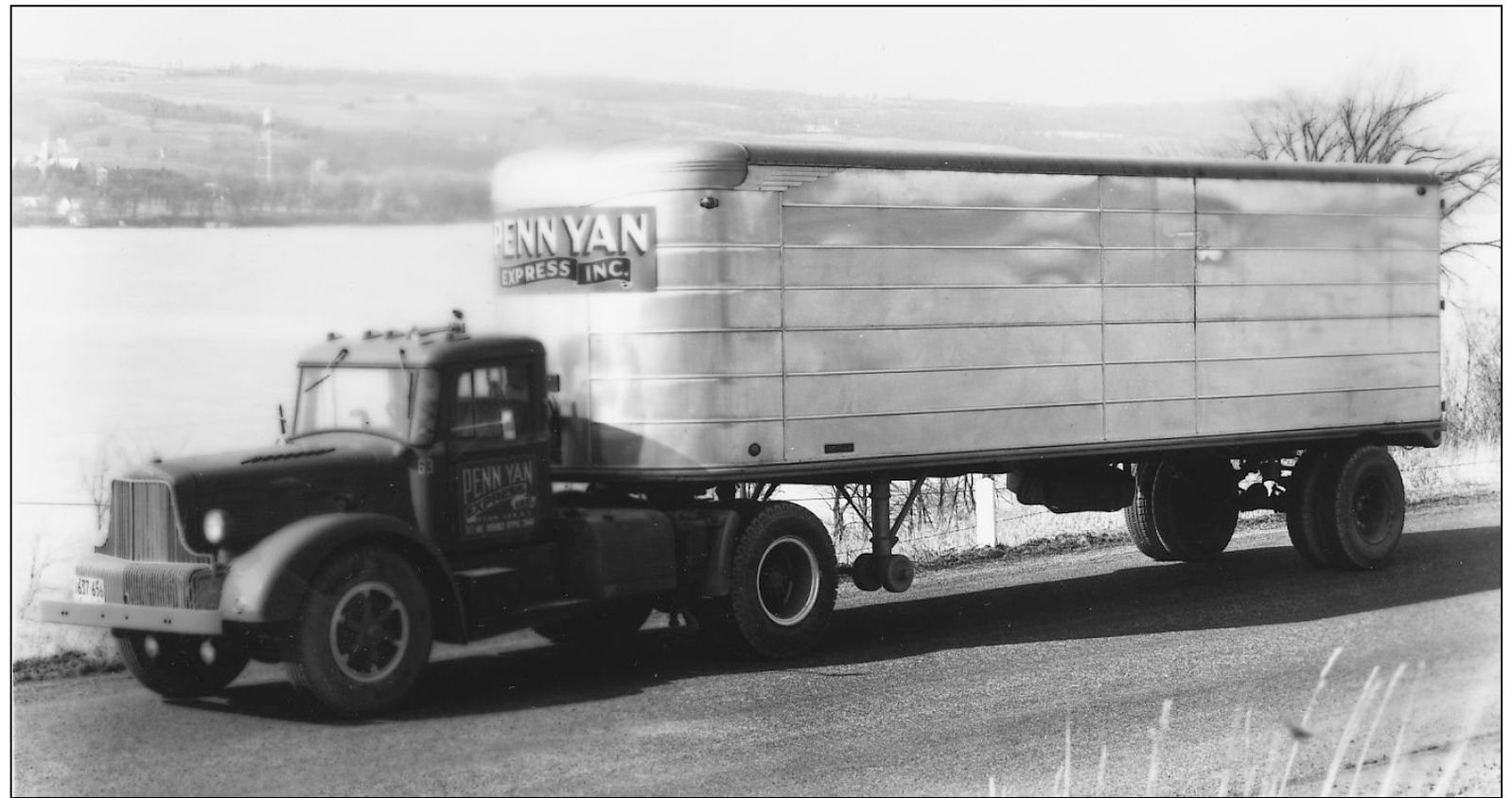
Penn Yan Express also advertised the name “Penn Yan” around the country. Local residents taking trips around the United States liked to recount, after returning home, how often they had seen Penn Yan Express trucks. Owner Bob Hinson liked to pose his trucks on Route 54 across from Keuka College, as in this 1951 photograph by Bill Potts.